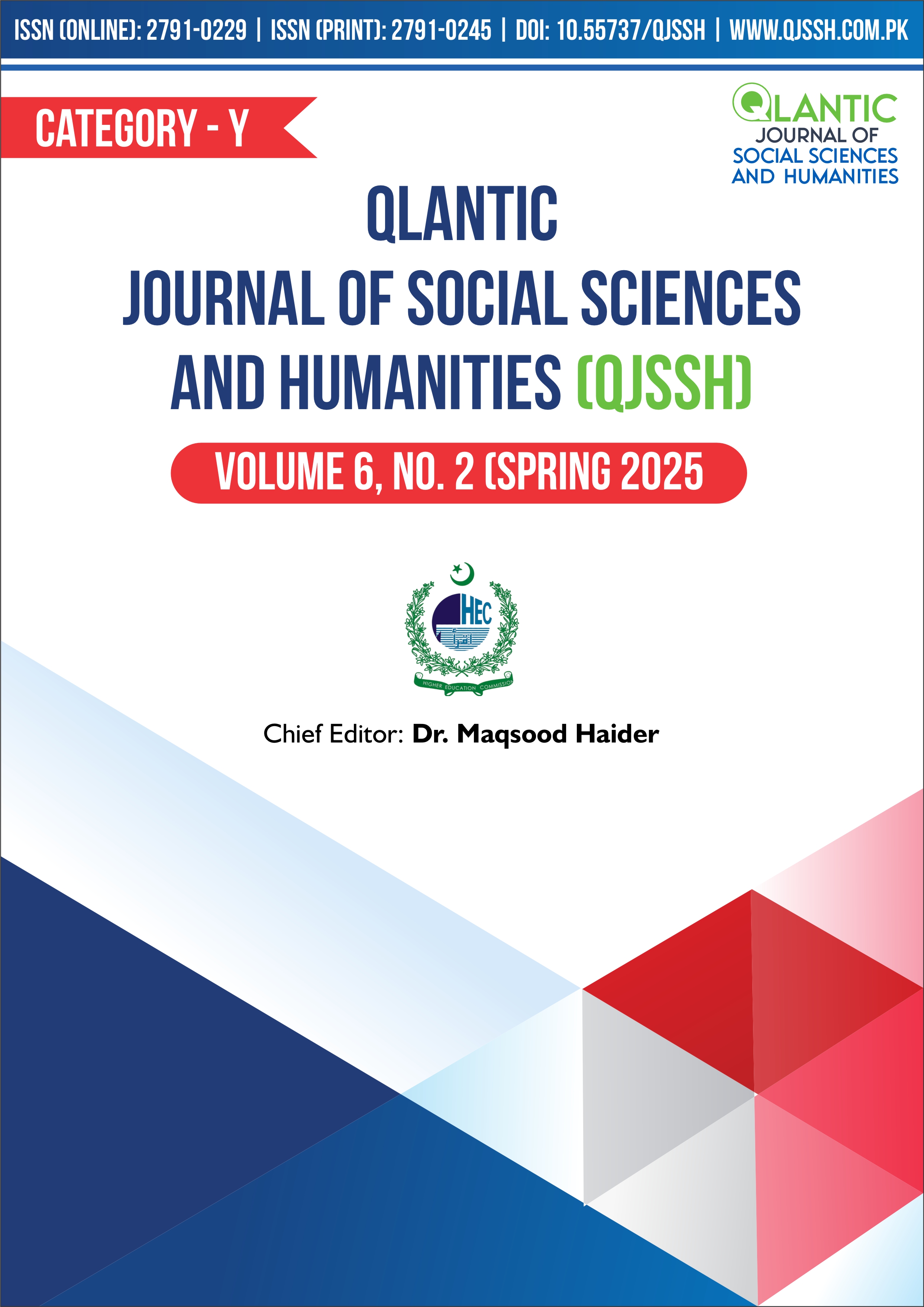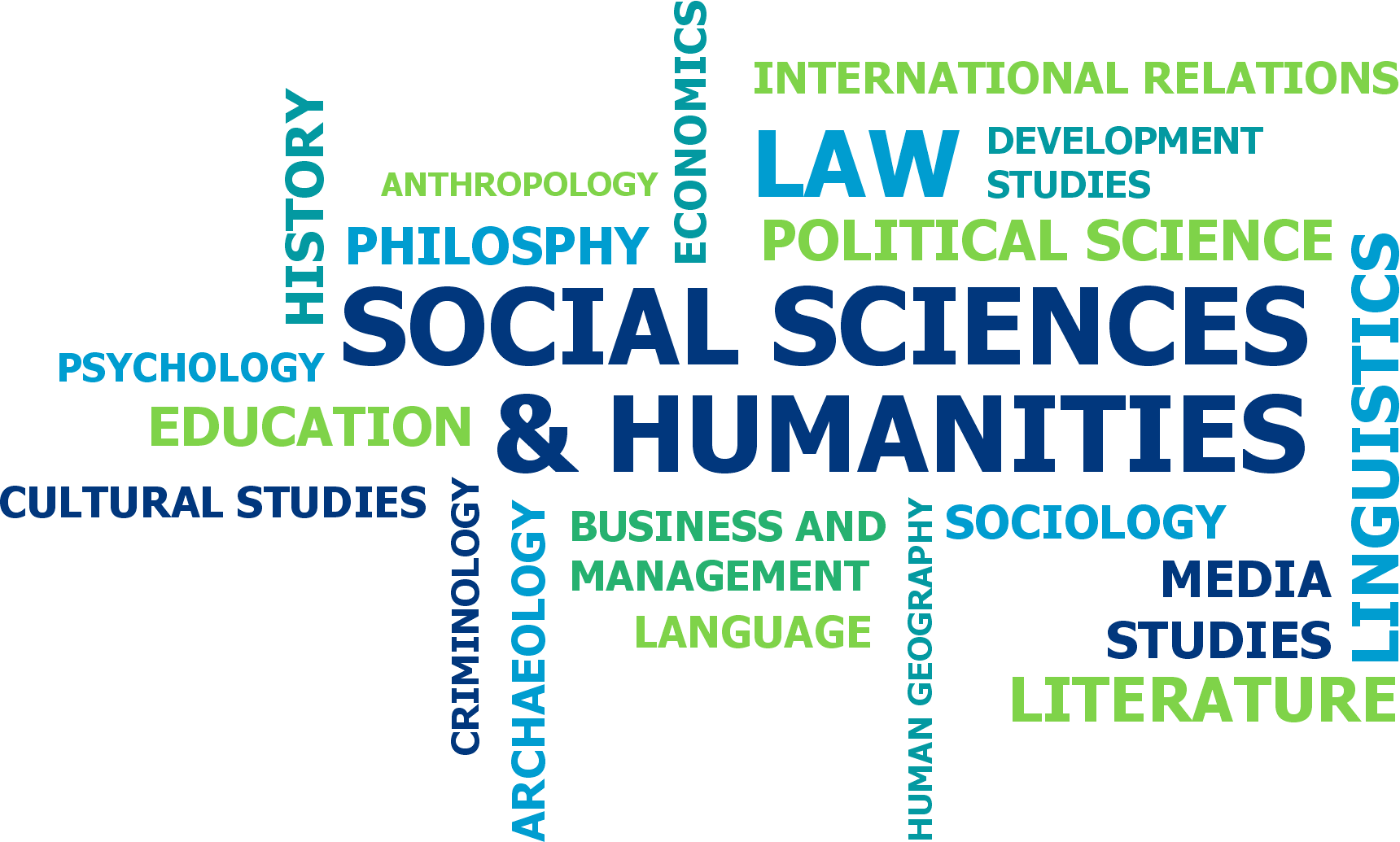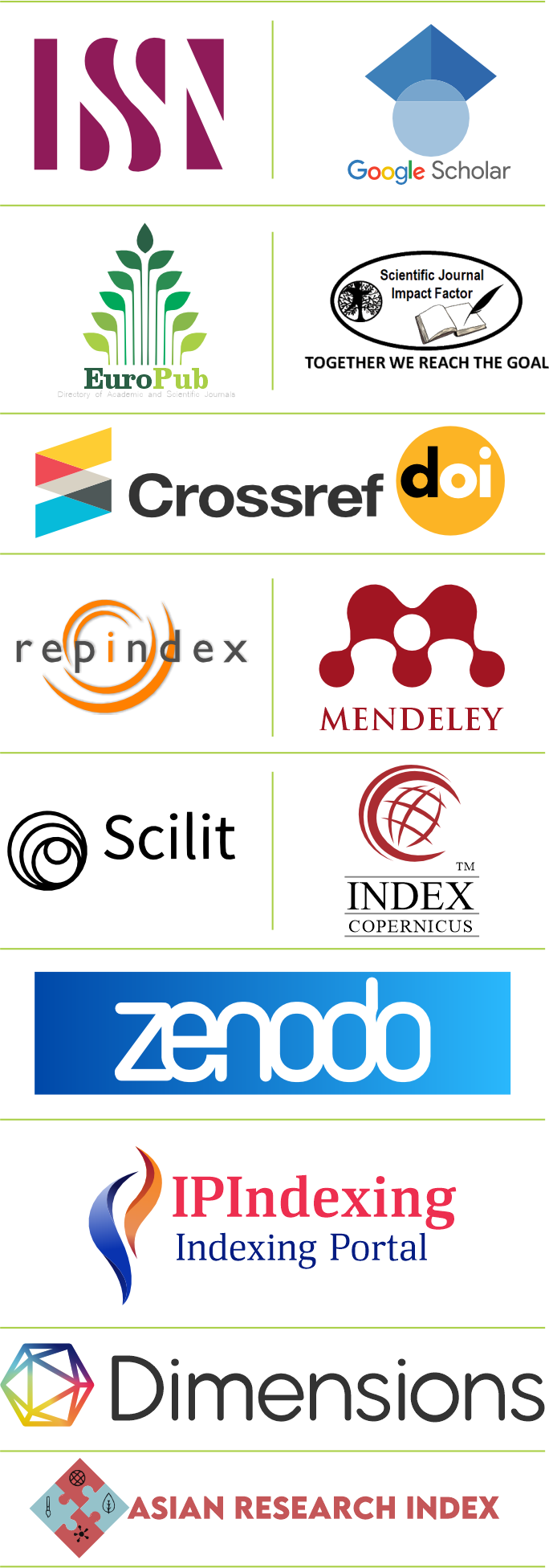Exploring the Linguistic Landscape of Peshawar: Space, Policies and Community’s Voice
DOI:
https://doi.org/10.55737/qjssh.vi-ii.25349Keywords:
Linguistic Landscape, Spatial Practices, Language Policies, Language Attitude, Visibility and Invisibility, Code Preference, Ethnic IdentityAbstract
This study explores the linguistic landscape of Peshawar by focusing on three interrelated dimensions: physical space, language policies, and residents’ attitudes towards spatial practices. Theoretically, the study is grounded in Trumper-Hecht’s three-dimensional theory of space. A total of 753 signs were collected from three key survey areas in Peshawar—Qissa Khawani Bazaar, Saddar Bazaar, and University Road—and analyzed to determine the visibility and dominance of languages. The 1973 Constitution of Pakistan was examined to understand the state's language policy. Additionally, interviews were conducted with 15 onlookers to gain insights into community attitudes toward language use in public spaces. The findings reveal that English is the most dominant language in Peshawar’s public spaces, followed by Urdu and Arabic. These three languages are recognized by state language policies, which in turn influences community preferences for their use in the linguistic landscape. In contrast, local languages remain largely absent from public signage and are not recognized in the Constitution. Nevertheless, some participants expressed a preference for the inclusion of local languages in public spaces. The study recommends incorporating local languages into all three dimensions of the linguistic landscape to promote inclusivity and cultural representation.
References
Ali, S. S. (2020). Linguistic landscape and the public space: A case study of Gilgit-Baltistan. Kashmir Journal of Language Research, 23(1), 153-177. https://kjlr.pk/index.php/kjlr/article/view/28
Backhaus, P. (2007). Linguistic landscapes: A comparative study of urban multilingualism in Tokyo. Clevedon: Multilingual Matters
Blommaert, J. (2013). Ethnography, superdiversity and linguistic landscapes: Chronicles of complexity (Vol. 18). Multilingual Matters.
Colomé, L. C., & Long, E. (2012). The linguistic landscape of three streets in Barcelona: Patterns of language visibility in public space. In Minority languages in the linguistic landscape (pp. 183-203). London: Palgrave Macmillan UK.
Dal Negro, S. (2009) ‘Local policy modelling the linguistic landscape’. In: Gorter, D. & Shohamy, E. eds. Linguistic landscape: expanding the scenery. New York: Routledge, pp. 206-218.
Gorter, D. (2013). Linguistic landscapes in a multilingual world. Annual Review of Applied Linguistics, 33, 190-212. https://doi.org/10.1017/s0267190513000020.
Hult, F.M. (2018). Language policy and planning and linguistic landscapes. In J.W. Tollefson and M. Pérez-Milans (Eds.,) Oxford handbook of language policy and planning (pp. 333-351). New York: Oxford University Press.
Jamil, A., & Kausar, G. (2021). Code preference in linguistic landscape: A forensic approach to the top-down signboards. Pakistan Journal of Social Research, 03(04), 446-455. https://doi.org/10.52567/pjsr.v3i4.307
Landry, R., & Bourhis, R. Y. (1997). Linguistic landscape and Ethnolinguistic vitality. Journal of Language and Social Psychology, 16(1), 23-49. https://doi.org/10.1177/0261927x970161002
MANAN, S. A., DAVID, M. K., DUMANIG, F. P., & CHANNA, L. A. (2017). The glocalization of English in the Pakistan linguistic landscape. World Englishes, 36(4), 645-665. https://doi.org/10.1111/weng.12213
Ou, L. (2023). A Study of the Three Dimensions of Linguistic Landscape: A Case Study of Five Star Commercial Pedestrian Street in Liuzhou, China. Academic Journal of Humanities & Social Sciences, 6(3), 1-7. https://doi.org/10.25236/ajhss.2023.060301
Rahman, T. (2007). Language planning in higher education: A case study of Pakistan. TESOL Quarterly, 41(2), 433-436. https://doi.org/10.1002/j.1545-7249.2007.tb00077.x
Scollon, R., & Scollon, S. W. (2004). Nexus analysis. New York: Routledge.
Shohamy, E., & Gorter, D. (Eds.). (2009). Linguistic landscape: Expanding the scenery. Routledge.
Trumper-Hecht, N. (2010). Linguistic landscape in mixed cities in Israel from the perspective of ‘walkers’: The case of Arabic. In E. Shohamy, E. Ben-Rafael, & M. Barni (Eds.), Linguistic landscape in the city (pp. 235-251). Bristol, Buffalo. Toronto: Multilingual matters.
Yavari, S. (2012). Linguistic landscape and language policies: A comparative study of linköping university and ETH Zürich. https://www.diva-portal.org/smash/get/diva2:574524/FULLTEXT01.pdf
Downloads
Published
Issue
Section
License

This work is licensed under a Creative Commons Attribution-NonCommercial 4.0 International License.





